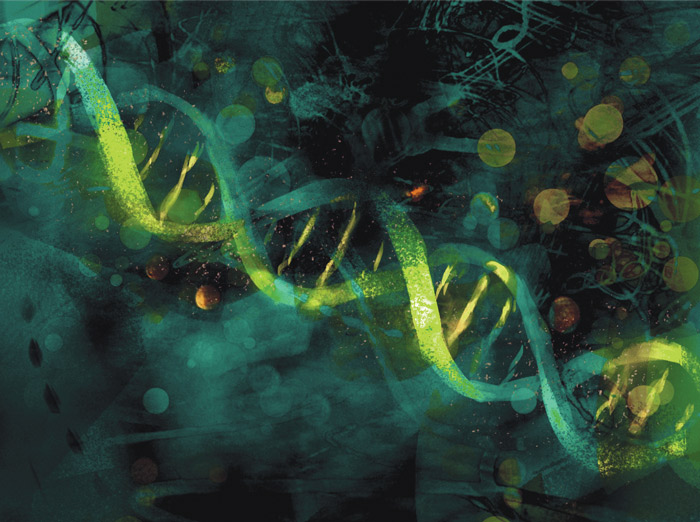A powerful gene-editing tool, known as CRISPR, has been developing, promising new approaches to treating various illnesses and even modification of children by their parents. Yet, it seems society still hasn’t addressed fears about the possible misuse of such technology—technology that research labs around the world have already started using.
CRISPR functions by altering damaging sequences in a gene. Recently, researchers learned to adapt this mechanism to more complex cells, allowing CRISPR to remove faulty copies of a gene and, given the right template, to replace it with a new one.
Drew Hendricks, a U3 anatomy and cell biology student at McGill, works as a research assistant in the Biological and Active Materials Lab, headed by Assistant Professor in McGill’s Department of Biochemistry Allen Ehrlicher. Hendricks explained the benefits of CRISPR technology.
“Say there’s a cancer-causing mutation [in a given gene],” Hendricks said. “I can program CRISPR to go find it and cut it out. I’m using CRISPR to float in a template [to] find the gap that those cuts made, and […] replace the gap with that template.”
Beyond the treatment possibilities of gene modification, there’s a larger, ethical issue at stake: Genetic modification of children by parents. CRISPR could potentially allow parents to choose traits in their future offspring, such as hair and eye colour. With the advancement of CRISPR, the idea and associated risks of ‘enhancing’ humans looms in the minds of scientists and citizens alike. The National Institute of Health (NIH) released a statement in 2015 about this issue.
“[The] NIH will not fund any use of gene-editing technologies in human embryos,” its website reads. “The concept of altering the human germline in embryos for clinical purposes has been debated over many years from many different perspectives, and has been viewed almost universally as a line that should not be crossed.”
Yet, CRISPR remains a powerful tool, and the NIH continues to fund research that uses CRISPR for other research purposes, such as correcting mutations in adult stem cells. But replacing one gene in the human genome is a drop in a bucket, and CRISPR often still produces off-target effects. The human genome comprises around 20,000 genes, and the templates used are often small, targeting just a small part of a particular gene, meaning the code in the template can be sent to another address in the genome than what was intended. For now this presents a major obstacle to the development of commercial technologies. Moreover, the kinds of broad traits that might be changed in designer babies are genetically very different from curing diseases that are caused by a single gene mutation.
Thomas Durcan, assistant professor in the Department of Neurology and Neurosurgery at McGill and member of the Centre for Neurodegenerative disease group at the Montreal Neurological Institute (MNI), pointed out the important distinction between curing specific diseases and predetermining someone’s sex, eye colour, athleticism, or intelligence. He explained that from a clinical point of view, CRISPR requires many more years of development before it can be used as a therapy—even for diseases affected in only one gene—while features like height or intelligence are far more complex.
“To design a baby, fixing multiple traits at the same time, that’s probably much further down the line, if at all,” Durcan said. “CRISPR might even become obsolete in 10 years.”
Ultimately, it’s easy to come up with reasons why scientific advancements could cause damage along with benefits. CRISPR represents a totally new paradigm in biomedical science, and though fears of designer babies may be overblown, the time to start asking broad ethical questions about how this technology will be used is now.









